Updated: October 2, 2024- 9 min read
Think about your product leadership journey so far. You meticulously lay out roadmaps, prioritize features, and interact with countless stakeholders. It's an array of activities, each playing its part in the grand scheme of product development. But here's the catch: Not every step on the roadmap is predetermined.
Editorial note: This post is based on a talk by Sneha Narahalli, Sephora VP of Prod UX, on Empowering PMs as a Woman Leader and contains additional insights and examples from the Product School team. You can watch the webinar in full above.
As a product leader, you're well aware of the strength and adaptability of your mindset. Embracing the unforeseen, adjusting to it, and seizing the opportunity is the essence of your approach. You talk about pivoting your product based on market feedback, but have you thought about pivoting your perspective based on life's feedback?
Become the product and get to know the customer
In the world of product management, you're often told to know your customer. But have you ever stopped to think that perhaps the first thing you need to understand is yourself? Just as a product finds its unique selling proposition, you too must find what sets you apart in the dynamic realm of product leadership. This is not just about personal growth; it's about maximizing your effectiveness in your role.
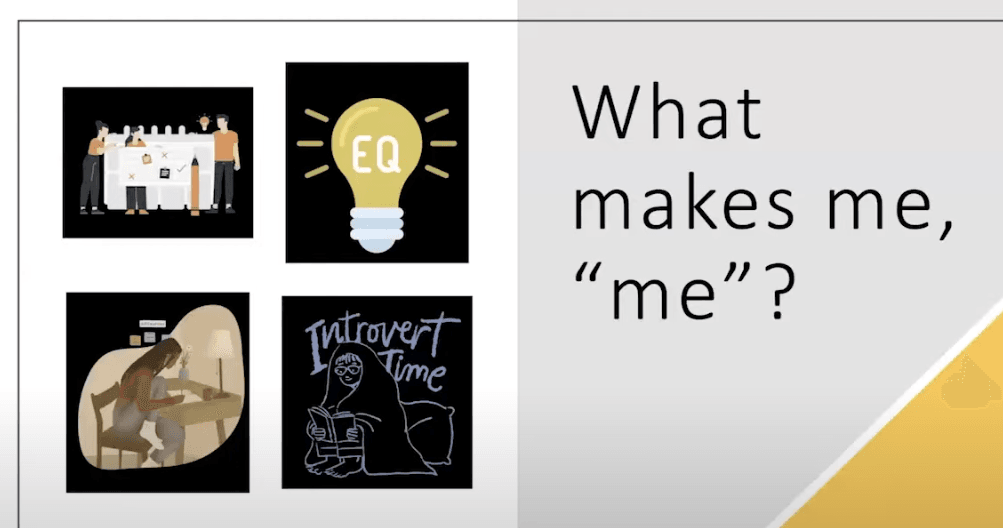
Discovering you
Imagine for a moment you're a product. How well do you understand this product's strengths, weaknesses, opportunities, and threats? Do you know what environment helps it thrive and what hinders its potential? Ponder on the elements that make you unique. Perhaps, like many of us, you're on a journey of self-discovery and evolution. And that's alright. Remember, the best products in the market aren't static; they grow and evolve with time.
The emotional spectrum and you
Your emotional quotient, just like a product's user experience, plays a significant role in your interactions and performance. Whether you've realized you're more introverted or that writing is your therapeutic escape, these self-insights are invaluable. They not only shape your productivity tactics (like that ever-growing to-do list that keeps you on track) but also influence your collaboration dynamics.
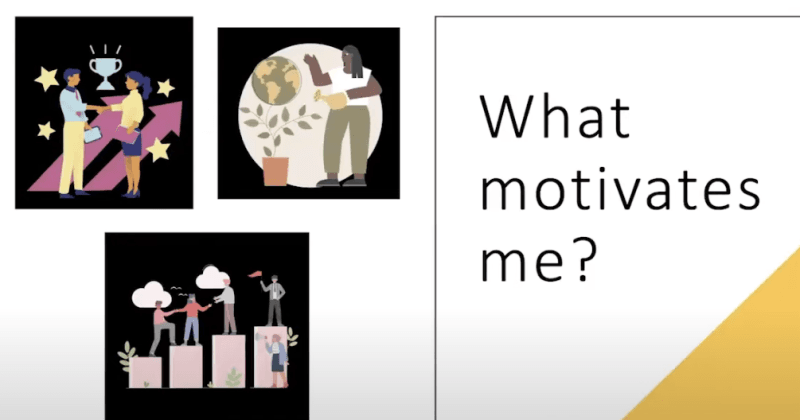
Leveraging self-awareness
Knowing yourself lays the foundation for a synergistic team. When you're clear about your strengths, weaknesses, and working style, you can assemble a team that fills the gaps, complements your approach, and offers diverse perspectives. This doesn't just fortify the team's collective capability but also nurtures a vibrant, understanding, and harmonious work environment.
The power of communication
While telepathy might still be a distant dream, clear communication is our most potent tool today. If you've realized that immediate responses aren't your strength and you need a moment to process, share that. By openly communicating your preferences, boundaries, and strengths, you empower your colleagues and leaders to collaborate more effectively with you.
Embrace your unique perspective
You might have spent years striving to fit a mold, only to realize that your distinct perspective is your strength. Diversity isn't just about meeting quotas; it's about integrating varied thoughts and experiences to create outstanding products. Embracing and valuing your own unique viewpoint to inspire others to do the same.
The 'Me' framework
As you reflect, consider developing your own 'Me' framework. Dive deep into who you are, your working style, your emotional landscape, and your communication needs. Align this self-knowledge with your professional goals. When you truly know yourself, you not only amplify your productivity but also elevate the entire product management journey.
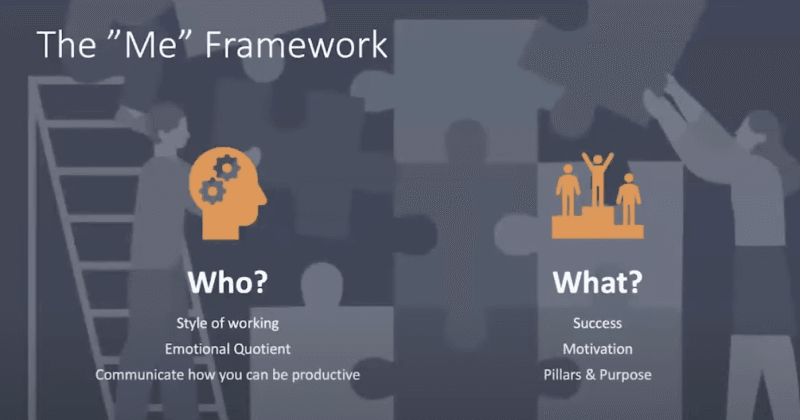
In a world driven by customer-centricity, remember that understanding the 'product'—that's you—is paramount. So, take a moment, introspect, and start this enriching journey of self-discovery. Your products, your team, and most importantly, you will thank you for it.
Define what success means to you
Success is a complex term in the world of product management. Just as you diligently identify metrics and define objectives for a product, isn't it crucial to introspect and determine what success means in the trajectory of your professional journey?
1. Crafting your personal metrics
Reflect on your personal success metrics. Is it about attaining a particular role, like becoming the Chief Product Officer? Or is it about the number of meaningful projects you've led or the transformative products you've launched? Sometimes, success isn't about ascending the corporate ladder but amassing experiences and having enriching conversations with industry mavericks.
Motivation comes in multifaceted forms. For some, it's climbing the corporate ladder; for others, it's about broadening their responsibilities and influence. You might find motivation in nurturing a stellar team or perhaps in having consequential conversations that fuel innovation.
2. Growth: beyond job titles
Success often intertwines with growth. However, growth is not just about promotions or getting a raise. It's also about personal development. What new skills are you learning? How are you fostering relationships within and outside your team? The lens of growth extends beyond your current role. It's about who you're becoming both as a professional and an individual.
Growth, at different career junctures, signifies distinct accomplishments. While in your early career, it might represent promotions, as you advance, it may pivot to influence, thought leadership, or mentoring others.
3. The 5-year vision
It's amusing, isn’t it? The quintessential interview question: "Where do you see yourself in five years?". But it’s worth pausing and reflecting on this. By visualizing your long-term aspirations, you can strategize on how to reach your future goals from your current position. Sometimes, seemingly lateral moves or even steps back, when aligned with your long-term vision, are actually strategic leaps toward your desired future.
4. Life's pillars: the bedrock of holistic success
Life isn’t one-dimensional, and neither should be your definition of success. Picture your life as a structure held up by multiple pillars – family, health, work, personal passions, and more. True success is when all these pillars are balanced and thriving. It's not about compromising one for the other but finding a harmonious balance. Every pillar has its unique importance, and you might need to set distinct goals for each.
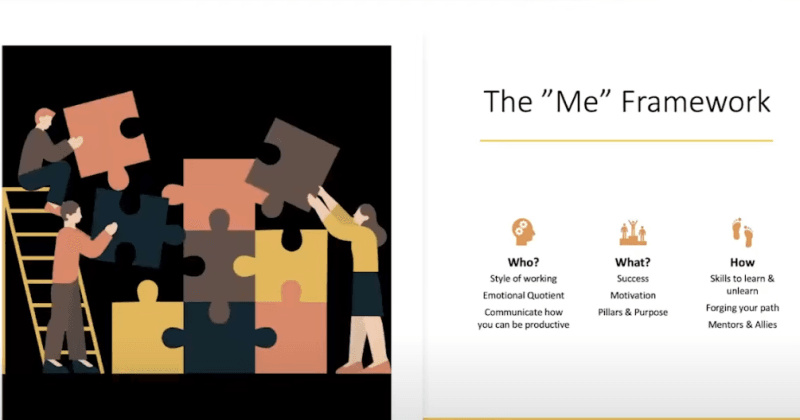
Make it happen
So, you've dug deep into understanding yourself, and your motivations, and defined what success looks like. Now, comes the pivotal question: How do you bridge the gap between your current situation and the success you envisage?
Much like navigating the product lifecycle, steering your career requires a blend of strategy, introspection, and adaptability. While there isn't a one-size-fits-all formula, there are foundational steps to guide you.
1. Chart your unique career map
No two career journeys are identical. Embrace your unique path, celebrate its quirks, and glean insights from its ebbs and flows. Reflecting upon your decisions, whether it’s about choosing a company or staying the course, provides a compass for your future trajectory. This retrospective insight not only helps you set the direction for your onward journey but also fuels you with clarity and purpose.
2. The cycle of learning and unlearning
Being in the driver’s seat of your career means consistently updating your skills toolkit. With every new role or responsibility, there's a set of capabilities you need to master and some you might need to set aside. Ask yourself: If thrown into a higher role tomorrow, would you be prepared? This self-assessment helps identify gaps and strengths in your skillset, enabling a proactive approach towards personal development.
Surrounding yourself with a dynamic circle of peers, mentors, and confidants creates a rich learning ecosystem.

Pro tip: Draw inspiration and insights from everyone, irrespective of their title. Every interaction can be a learning opportunity, and tapping into this network will help you in your quest to learn, unlearn, and relearn.
3. Cultivate enduring relationships
Your career's most enduring assets aren't just the titles you earn or the projects you helm; they're the relationships you cultivate. These connections provide mentorship, and opportunities, and often become the cornerstone of collaborative successes. Foster and cherish these bonds, as they often pave unforeseen pathways and provide counsel in challenging times.
Timing: unfurling your personal framework
As we delve into the concluding phase of the Me-framework, the spotlight is on initiation, progression, and perpetual evolution. This perspective on career and life embodies this vision of a product life cycle—incessantly evolving, discerning various pieces, and weaving them cohesively.
1. Personalize your journey
In this dynamic digital age, we're constantly bombarded with the mantra of 'personalization'. Be it enhancing the user experience on a website or curating apps to user preferences, the buzzword reverberates everywhere. But, have you ever considered customizing your journey? Drawing parallels from customer-centric personalization to shaping one’s career or lifestyle can reveal profound self-insights, propelling you toward your aspirations.
2. Foster a supportive ecosystem
Empathy, a cornerstone of leadership, stems from personal experiences. Make sure to curate an environment that insulates your team from the brunt of imposter syndrome, an aspect of our psyche that often goes unaddressed and can undermine our confidence and decision-making.
Surmounting this challenge often hinges on having robust mentors. Their clear-eyed, objective insights and guidance, distilled from years of experience, can act as a bulwark against the potential pitfalls of overthinking.
3. Be your best advocate
Drawing an analogy from product development, if you've nurtured a stellar product, wouldn't you want the world to know? Similarly, championing yourself is paramount. However, it's vital to strike a balance—self-promotion should empower, not distress.
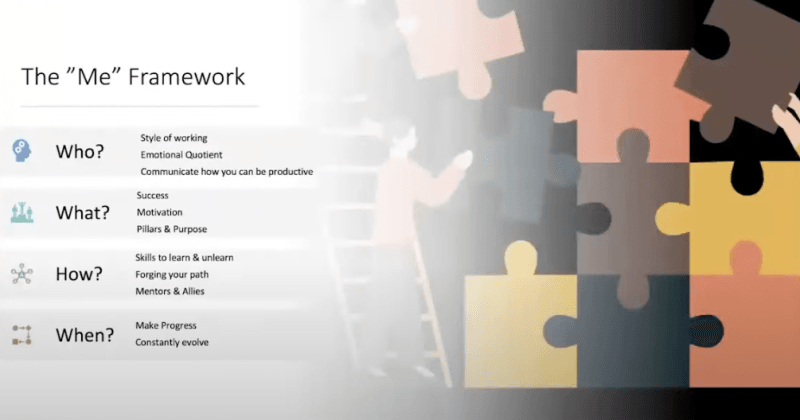
Progress, not perfection, should be the compass guiding your journey. Rather than rigidly adhering to pre-defined milestones like specific designations, focus on continual growth aligned with your life's pillars.
In conclusion, in the vibrant journey of product management, while you continuously craft success stories for your products, take a moment to write your own. Define, redefine, and chase what success truly means to you. After all, as a product manager, your well-being and professional growth define your success. So, take charge, set your metrics, and pursue your own success story with fervor.
Learn more with Product School
Know who you are as a Product Leader and lead your Product teams to success with our Product Leader Certification (PLC)® designed by successful Product Managers to help you build end-to-end product development skills while offering the hands-on experience you need to lead product teams.
Discover PLC today, and take the first step towards becoming a strategic, successful, and influential Product Manager. Schedule a call today to find out more.
Updated: October 2, 2024





